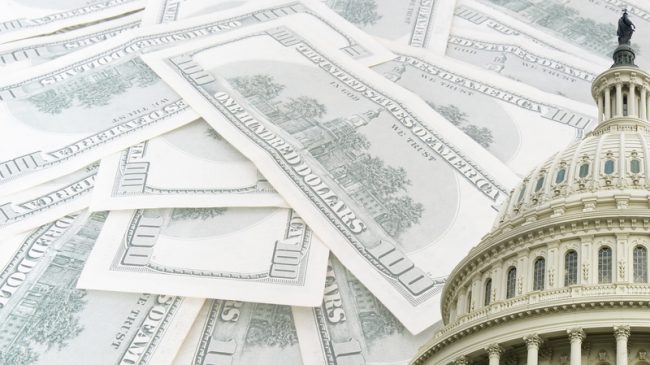Previous: 5. Financial Services > Taxpayer’s Guide > Next: 7. Interior
Summary: This section provides $3.2 billion for the Department of Homeland Security, Customs and Border Protection, the Transportation Security Administration, Federal Emergency Management Agency, and related agencies to enhance policing measures and expand programs.
>> Spending
$1 billion for TSA Aviation Security. This money is specifically for the Transportation Security Administration to buy new and better bomb detection equipment. Approximately $600 million will be used to create a new baggage screening system, and the remaining $400 million will go towards developing new passenger screening systems.
$700 million for U.S. Customs and Border Protection. This money will go to upgrade and repair CBP equipment, facilities, and security measures. Port security will receive $420 million to repair or build new inspection facilities at custom offices where people enter the United States. CBP will get $160 million to overhaul its communications and inspection equipment. The Immigration and Customs Enforcement (ICE) division will receive $20 million to modernize its equipment.
Lacking from the stimulus is guidance for what the vision of CBP should be in updating its equipment. In order to encourage economic growth, the government should be working to make it easy to enter and stay in America, and updated CBP systems will be a big part of that.
$650 million for Homeland Security. Homeland Security will receive $200 million to renovate and consolidate its headquarters. The General Services Administration will get $450 million to assist in this process.
$615 million for Federal Emergency Management Agency. FEMA will get $610 million for emergency programs and grants. Nearly half of that, $300 million, will be given in grants from FEMA to state and local governments to help with disaster relief and emergency readiness programs. Firefighting departments across America will get $210 million through FEMA grants funded by the stimulus, and $100 million will be used for emergency food and shelter programs. The FEMA Community Disaster Loans program was also expanded by $5 million.
$240 million for the Coast Guard. DHS will work with the Coast Guard to improve bridges in America with a $142 million grant from the stimulus, while $98 million will help the Coast Guard to improve its shore facilities, cover budget shortfalls, and buy new ships as necessary.
$100 million for the Southern Border Security Fence. This money will be given to ICE to go towards accelerating the process of building a fence that partially covers the border with Mexico. Ironically, this spending could be construed as anti-stimulus spending.
Individuals coming into America from Mexico or overseas are manpower that helps build our economy. The border fence takes the opposite immigration approach to fueling the “stimulative” power of open borders. In addition, continuing to spend money on a fence that will do little to stop the flow of illegal immigration relative to its cost is not an efficient use funds from a cost-benefit analysis perspective.
Buy American Clause. This provision requires that anything purchased with stimulus money must be produced in the United States, from clothing and tents purchased by FEMA, to manufacturing equipment or steel for fixing bridges.
The “Buy American Clause” creates an artificial bubble for companies to compete in. By eliminating foreign competition, American firms do not have to adjust to global economic trends. This temporary crutch will increase prices of American goods for consumers, leaving individuals and families with less disposable income. This also prolongs the survival of companies that have weak business models, allowing them to remain viable for the term of the stimulus projects, but afterwards fold under pressure from real competition. This has great potential to hurt the economy in the long term. (Also see the Buy American Clause under “General Provisions“).
>> Commentary
Government spending on programs such as TSA security systems is completely unneeded. Private sector security companies can just as easily, if not with better results, design security systems for screening passengers and baggage at airports. Furthermore, private security companies would do a better job at running checkpoints in airports because, with a contract paid for by the airport, they would have a very high incentive to ensure protection. They would also have an incentive to make the process fast because airports could fire and hire companies based on both their effectiveness and quality. This is the kind of public-private partnership that could save the government billions in security costs but has instead chose to ignore with high priced government options.
- Also see:
- Study: Airport Security
- Let Airports Take Over Security
- Improving Management of the Aviation Security Workforce
- Problems with “Buy American” Clause
More from Reason on airport security and DHS.
>> Government Recovery Websites
Department of Homeland Security: http://www.dhs.gov/recovery
Previous: 5. Financial Services > Taxpayer’s Guide > Next: 7. Interior
Written by: Anthony Randazzo. Please email with any comments or corrections.
